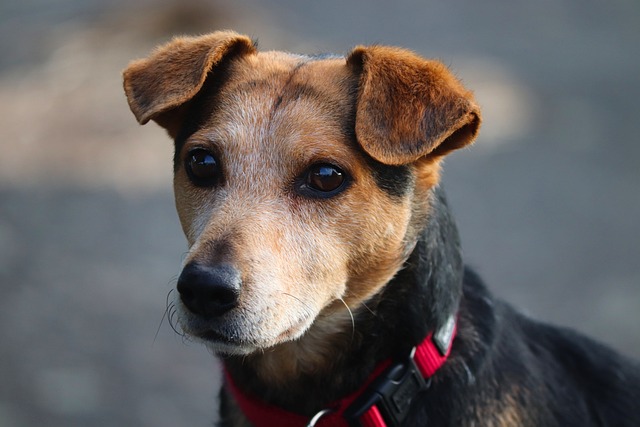
How do i train my dog to be obedient?
Watching your dog dart across the park ignoring your calls isn’t just frustrating—it can put them at risk near busy streets or public spaces.
Picture your eager Boston Terrier puppy, Luna, straining against her leash on your Brooklyn sidewalk walk, nearly tugging you into traffic. That frantic pulling isn’t stubbornness – it’s pure excitement mixed with instinct. Teaching polite leash manners isn’t about strength battles; it’s about communication through positive reinforcement leash training. Forget yanking back or choke chains – modern animal behavior science proves force increases frustration and fear. Instead, transform walks into rewarding teamwork where loose leash walking means adventure, not restraint.
Start where distractions are minimal – your quiet living room or hallway. Attach a lightweight leash and let Luna drag it while you play, building positive associations. Next, hold the leash loosely. The instant she looks at you or the slack forms, mark it with a joyful "Yes!" and reward with chicken bits. This teaches her proximity pays. When she inevitably pulls ahead (puppies explore nose-first!), simply stop walking. Stand frozen like a tree – no talking, no tugging. The moment she glances back or loosens tension, mark/reward and resume walking. This "stop-and-go" method taps into operant conditioning: Pulling makes progress stop; returning to you makes fun continue. Practice daily in 5-minute sessions before graduating to your apartment corridor or empty parking lot. Use a well-fitted harness (not collar!) to protect her delicate trachea. Patience is key – celebrate one step of loose leash walking like a major win!
Gradually introduce mild distractions – a parked car, a distant bird. If Luna lunges, stop immediately. Wait for her attention, then reward focus. For determined pullers, try direction changes: When she surges ahead, cheerfully pivot and walk the opposite way, rewarding when she catches up. This builds engagement and teaches her to monitor your movement. Keep treats handy in a waist pouch for instant rewards. Remember, sniffing is vital mental enrichment! Allow designated "sniff breaks" on loose leash to satisfy curiosity without reinforcing pulling. This balance fosters calm neighborhood walks instead of frantic tug-of-war.

Now, the non-negotiable real-world context. Before practicing outdoors near parks or sidewalks, ensure Luna’s vaccinations are current per state and local laws – parvovirus lives in soil for years. Always carry biodegradable poop bags; cleaning up immediately isn’t optional. Fines reach $300+ in cities like London or Seattle, and it’s a fundamental community health responsibility. Apartment dwellers, master "quiet exits": Avoid excited chatter in hallways that hypes Luna up pre-walk. Practice calm leash handling near elevators and stairwells. If she barks at neighbors, create distance and reward quiet focus. Respect shared pathways; don’t let her zig-zag leash block others or approach leashed dogs without consent. Post-walk zoomies in the lobby? Keep her leashed until calm.
Consistency transforms chaos. If Luna pulls toward a squirrel in Central Park, stop instantly. Wait. Reward disengagement. It might take minutes initially – embrace it. Never let pulling "work" by allowing her to reach the target. Use high-value rewards (freeze-dried liver!) in high-distraction zones. If frustration builds, shorten the walk and end positively. Positive reinforcement leash training forbids leash jerks or scolding – these create negative associations with walks or trigger defensive reactions.
Ultimately, leash training is trust-building. By rewarding loose leash proximity, strategically stopping progress when pulled, and respecting community rules (cleanup, vaccines, quiet corridors), you transform frantic tugging into joyful partnership. Those peaceful calm neighborhood walks start with patience in your living room – proving that gentle guidance, not force, creates the happiest urban explorers.

Watching your dog dart across the park ignoring your calls isn’t just frustrating—it can put them at risk near busy streets or public spaces.

New puppy owners often find themselves rushing to clean up accidents before they set in, and that’s where puppy pad training becomes a game-changer.

If you've noticed your dog's waistline disappearing and your veterinarian has mentioned those few extra pounds, your first instinct might be to simply reduce the amount of food in their bowl.

Training a dog to use a designated spot indoors isn’t as daunting as many new owners fear, but it does take consistency and an understanding of your pet’s needs.

That moment of dread on a walk is all too familiar for many new dog owners. You see another dog approaching down the sidewalk of your neighborhood

If the sight of another dog on your neighborhood walk makes your heart sink as your own dog erupts into a frenzy of barking and lunging, you're not alone.